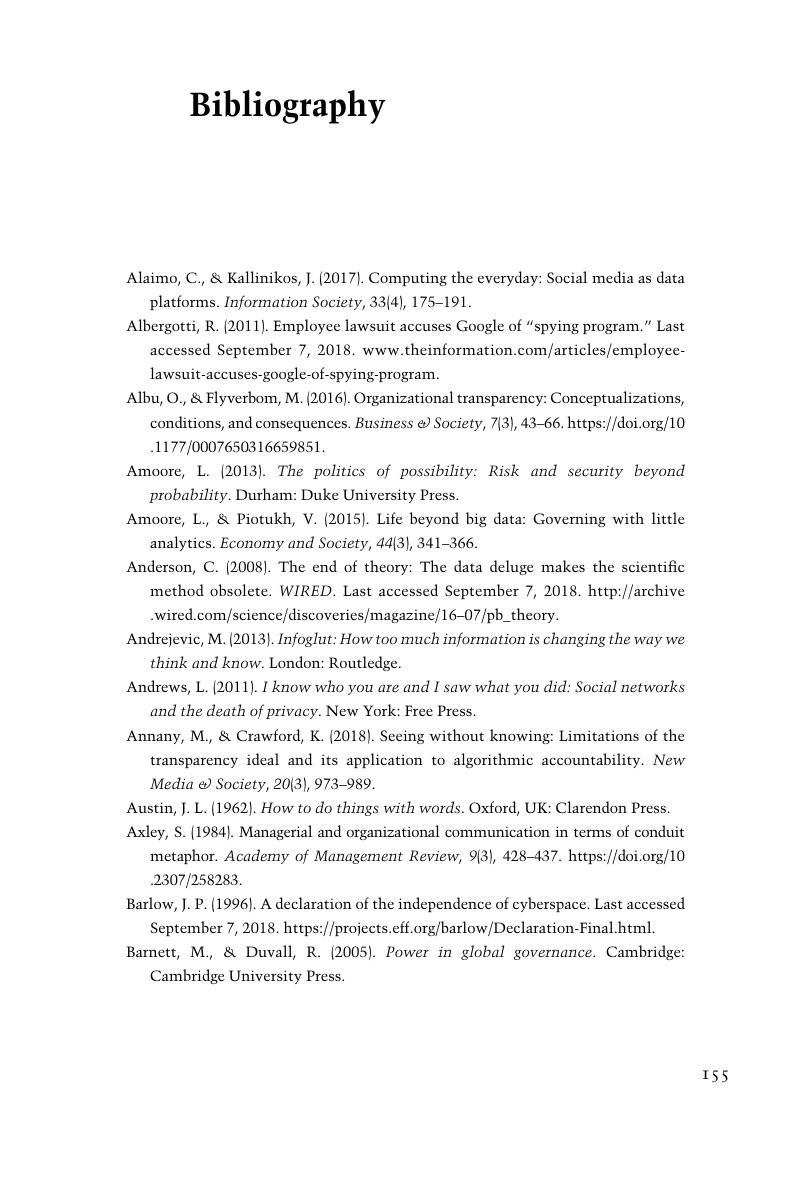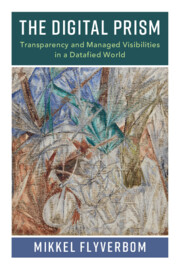Book contents
- The Digital Prism
- The Digital Prism
- Copyright page
- Contents
- Acknowledgments
- Introduction: The Transparency Formula
- 1 Digital and Datafied Spaces
- 2 Transparency and Managed Visibilities
- 3 People under Scrutiny
- 4 Organizations Gone Transparent
- 5 Seeing the World
- Conclusion: Life in the Digital Prism
- Bibliography
- Index
- References
Bibliography
Published online by Cambridge University Press: 27 September 2019
- The Digital Prism
- The Digital Prism
- Copyright page
- Contents
- Acknowledgments
- Introduction: The Transparency Formula
- 1 Digital and Datafied Spaces
- 2 Transparency and Managed Visibilities
- 3 People under Scrutiny
- 4 Organizations Gone Transparent
- 5 Seeing the World
- Conclusion: Life in the Digital Prism
- Bibliography
- Index
- References
Summary

Information
- Type
- Chapter
- Information
- The Digital PrismTransparency and Managed Visibilities in a Datafied World, pp. 155 - 169Publisher: Cambridge University PressPrint publication year: 2019
